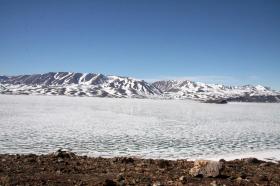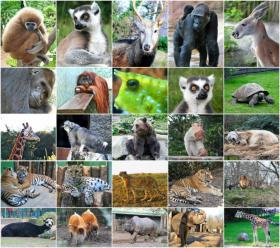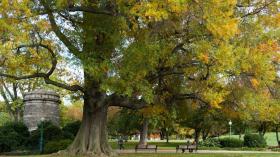Global warming is making the oceans more toxic due to spread of toxic algae. Climate change causes a series of problems for the oceans such as heating up, acidification, and the loss of oxygen.
A team of scientists investigated this by using ocean temperature data along with the growth response of two different algae, Alexandrium and Dinophysis.. These algae are the two most toxic algae in the North Atlantic and North Pacific Oceans. The study indicates that since 1982 the North Atlantic and North Pacific ocean basins have warmed and thus become hospitable to algae and algal blooms. These two algae can cause extreme health concerns that can cause paralytic and diarrhetic shellfish poisoning in humans. They could even kill people who consume contaminated shellfish. Also they can damage several marine ecosystems by killing fish and other marine life
 ater is not the only thing the melted snow will release. The snow contains a toxic cocktail from car emissions. These pollutants are then released int o the atmosphere after the snow melts.
ater is not the only thing the melted snow will release. The snow contains a toxic cocktail from car emissions. These pollutants are then released int o the atmosphere after the snow melts. As global warming increases, more snow and sea ice is melting. This increasing amount of sea ice that is melting in the Arctic can lead to an increased production of algae, which means more food for the organisms in the ocean. This melting ice leads to larger melt ponds. In these melt ponds, algae and bacteria can form, leading to more food for sea creatures.
As global warming increases, more snow and sea ice is melting. This increasing amount of sea ice that is melting in the Arctic can lead to an increased production of algae, which means more food for the organisms in the ocean. This melting ice leads to larger melt ponds. In these melt ponds, algae and bacteria can form, leading to more food for sea creatures. e of the largest contributors to environmental pollution of greenhouse gases.The normal jet fuel used for airplanes contains nitrogen oxide, sulfur dioxide, and carbon dioxide. These three are a combination of various pollutants which creates the greenhouse effect that harms our atmosphere.
e of the largest contributors to environmental pollution of greenhouse gases.The normal jet fuel used for airplanes contains nitrogen oxide, sulfur dioxide, and carbon dioxide. These three are a combination of various pollutants which creates the greenhouse effect that harms our atmosphere.

 the heat is the greater problem. As an experiment, researches went to 20 pairs of willow oak trees across North Carolina. At each site, one tree was treated with and oil that kills insect pests, and the other tree was not. The temperatures were also monitored at each site. They tracked the growth of all 40 trees for 2 years. They measured the growth by measuring the circumference of each tree’s trunk, by measuring how many specific branches grew on each tree, and by measuring each tree’s photosynthesis.
the heat is the greater problem. As an experiment, researches went to 20 pairs of willow oak trees across North Carolina. At each site, one tree was treated with and oil that kills insect pests, and the other tree was not. The temperatures were also monitored at each site. They tracked the growth of all 40 trees for 2 years. They measured the growth by measuring the circumference of each tree’s trunk, by measuring how many specific branches grew on each tree, and by measuring each tree’s photosynthesis. According to a new research, the wearing down of habitats is a greater risk to turtles and tortoises than the global temperature rising. More than 60% of these species are being described as vulnerable and critically endangered because they are being collected for food and medicine, and their habitats are being degraded.
According to a new research, the wearing down of habitats is a greater risk to turtles and tortoises than the global temperature rising. More than 60% of these species are being described as vulnerable and critically endangered because they are being collected for food and medicine, and their habitats are being degraded.